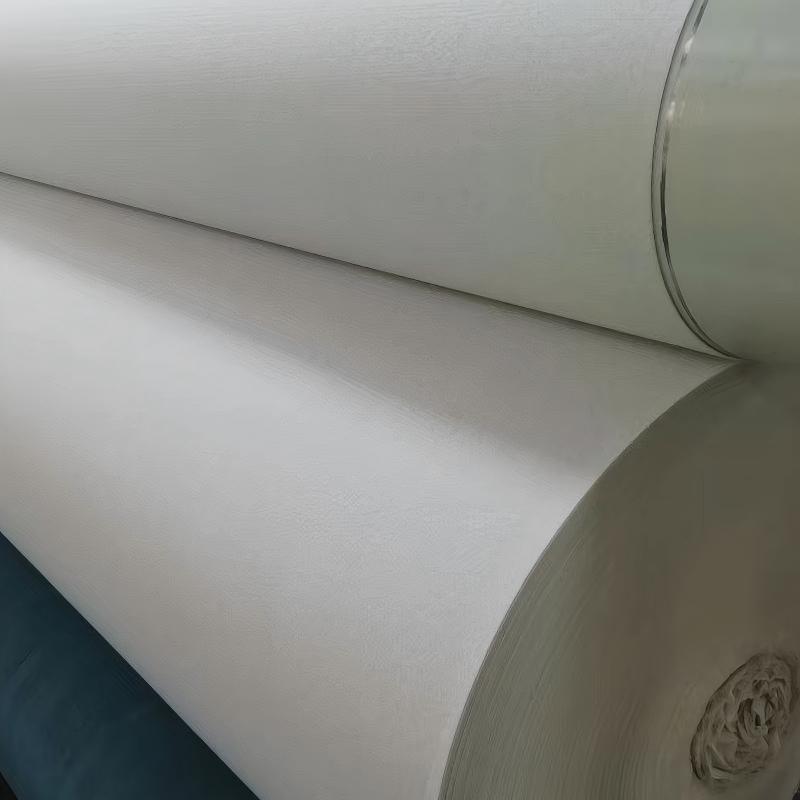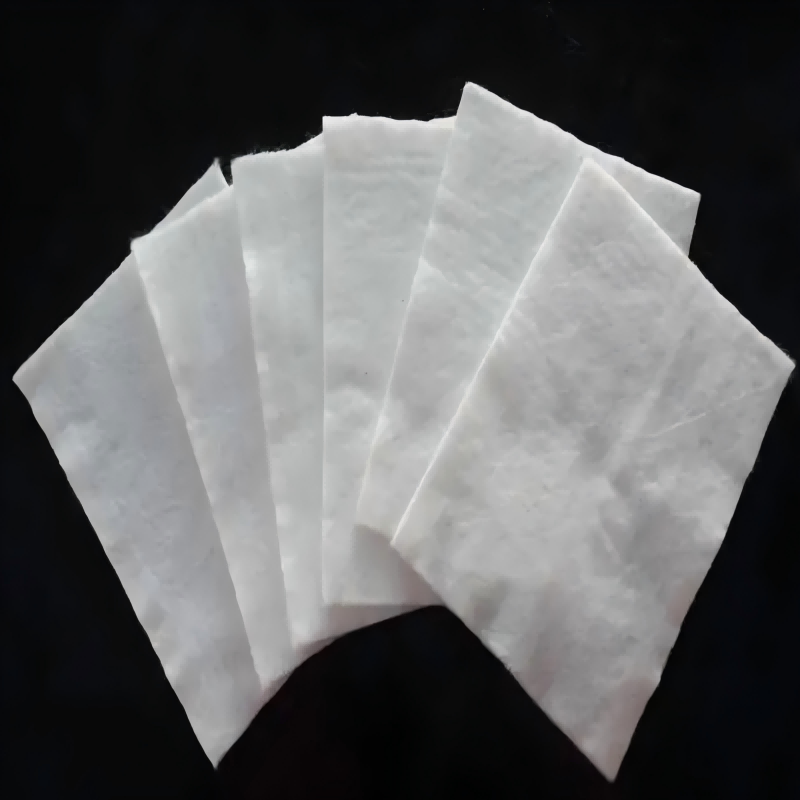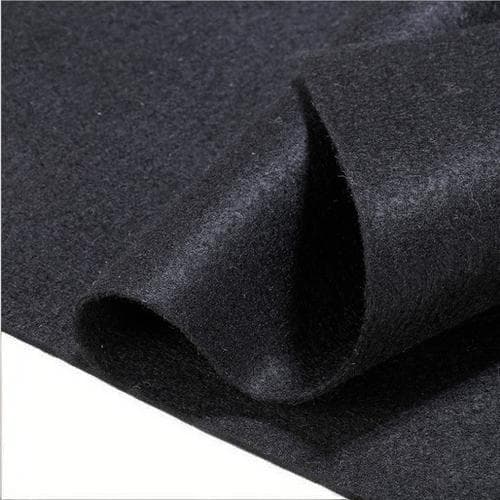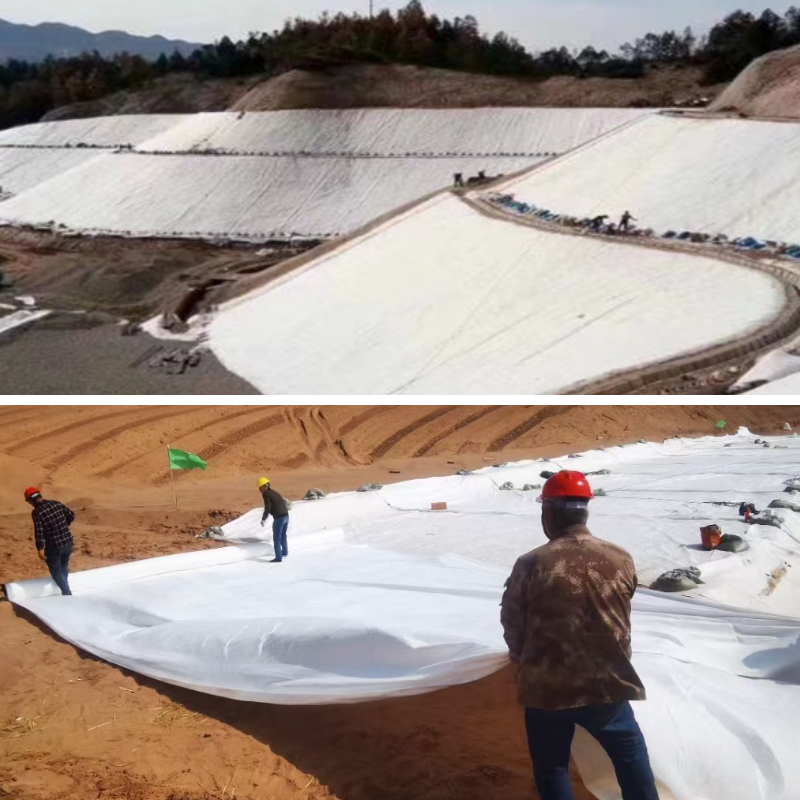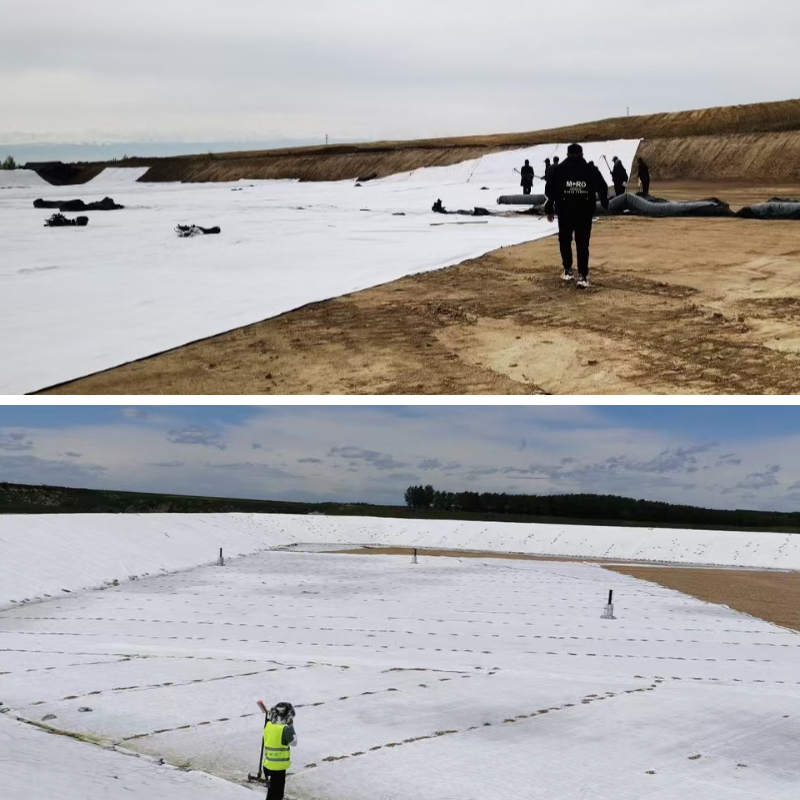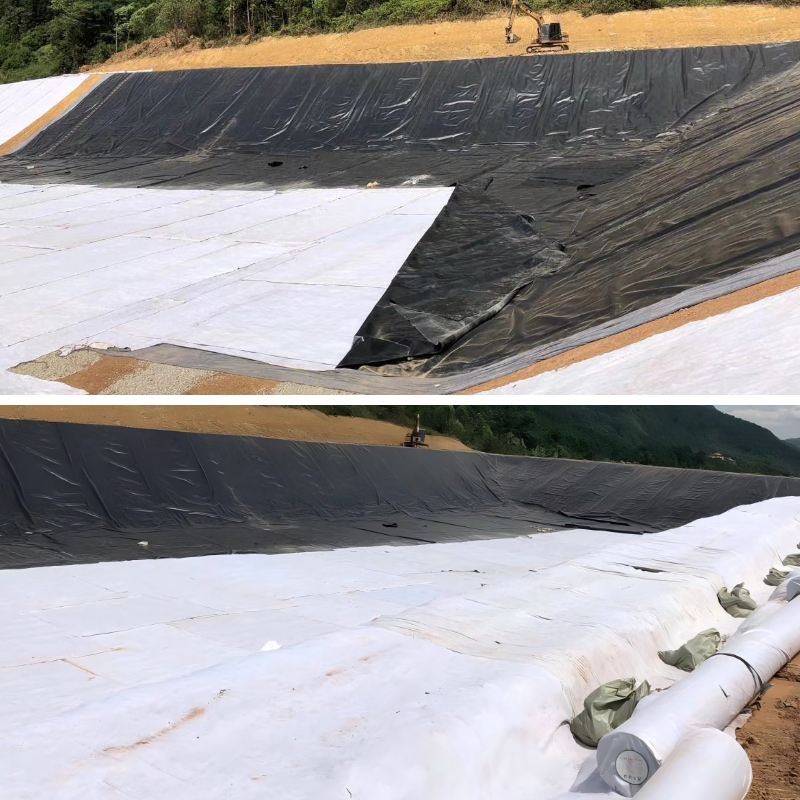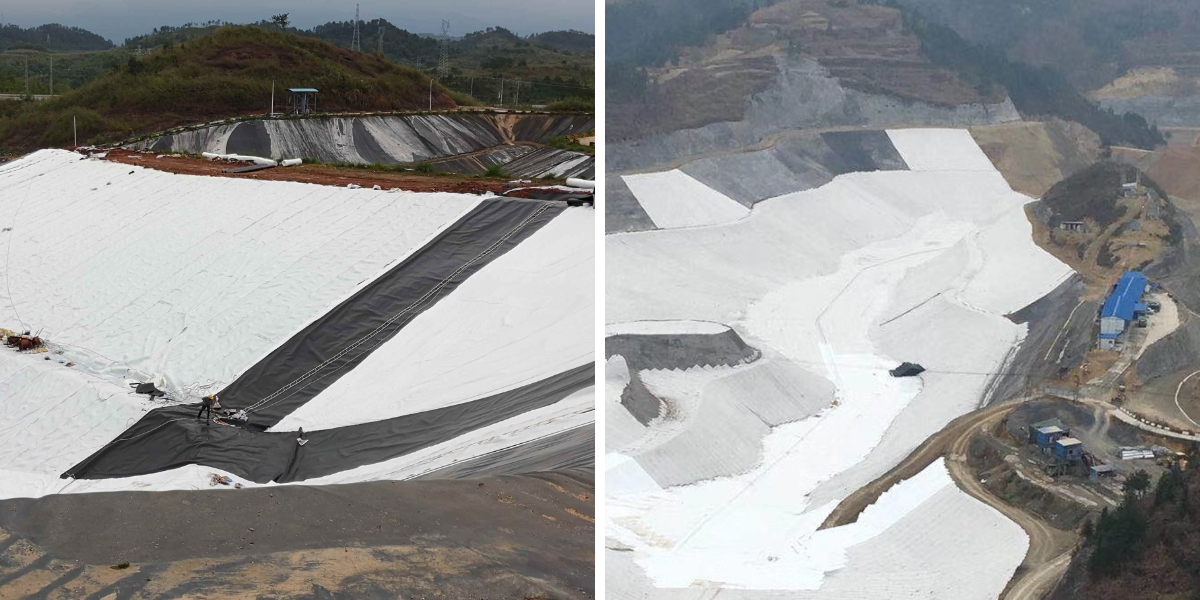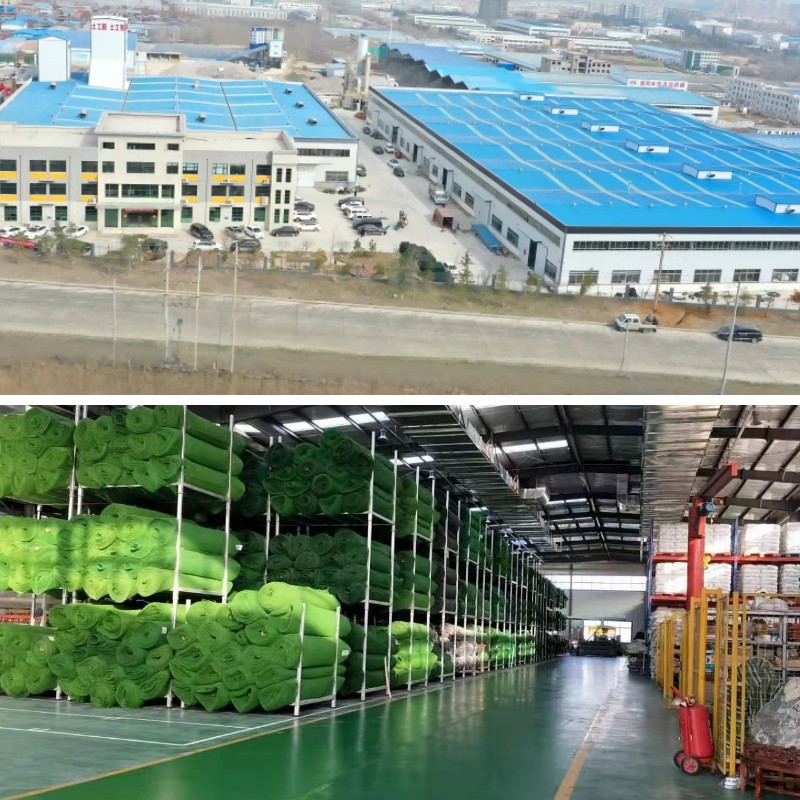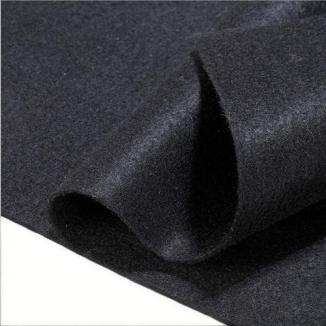Subgrade Stabilization Geotextile
1.Filtering permeability: Blocking impurities, fast drainage, and solving the contradiction of traditional filter materials.
2.Durable and universal: Anti-aging, 3-5 years from -30 ℃ to 80 ℃, applicable to multiple scenarios.
3.Cost saving and easy to install: Simple and fast construction by 60%, low cost by 30% -40%, and maintenance savings.
4.Environmental Protection: Recyclable materials, pollution-free, biodegradable or reusable.
Product Introduction
1、 Basic attributes
Material: Subgrade Stabilization Geotextile is made of recyclable polymer fibers such as polyester and polypropylene, and is treated with special processes to resist ultraviolet rays and acid and alkali. It can withstand harsh environmental erosion and avoid brittleness and fracture problems after long-term use.
Form: Woven into a three-dimensional mesh structure using non-woven technology. The conventional forms include roll (width 1-6 meters, length can be customized according to needs) and sheet (common size 1-3 meters square), with a thickness range of 0.5-3mm. The pore size can be adjusted to 1-100 μ m according to filtration requirements, suitable for different scenarios.
Usage: Widely covering multiple fields, it can be used for river dredging and filtration, as well as sewage pretreatment in the field of environmental protection; Suitable for construction site drainage and foundation anti-seepage filtration in the field of infrastructure; In the agricultural field, it can be used for irrigation water filtration, greenhouse drainage, as well as for special scenarios such as mine tailings treatment and landfill leachate filtration.
2、 Core functions
Filtering: With gradient aperture design, the surface layer accurately intercepts impurities such as sediment, dust, and fine particles (with a minimum particle size of 0.1mm), and the inner fiber gaps form stable filtering channels to avoid impurities blocking the pores, efficiently achieving solid-liquid separation. For example, in rainwater recycling on construction sites, sediment in rainwater can be filtered out, allowing the recycled water to be reused for watering and dust reduction.
Permeable: The network structure formed by interwoven fibers has highly permeable channels, with a permeability rate of up to 500-1500L/(㎡· h), much faster than traditional geotextiles, and can quickly divert accumulated water. For example, during the rainy season, when building foundation pits, the accumulated water in the pit can be drained within 1-2 hours to prevent foundation settlement caused by soaking in water.
3、 Main features
Strong durability: after anti-aging treatment, it is not easy to freeze and crack in the cold environment of -30 ℃, and will not soften and deform in the high temperature environment of 80 ℃. The normal service life can reach 3-5 years, which is 2-3 times of the traditional geotextile (1-2 years of service life), reducing the trouble of frequent replacement.
High economic efficiency: Construction does not require the laying of complex cushion layers, only simple cutting and splicing are needed for direct laying. The construction efficiency is 60% higher than traditional filtration systems, and the construction cost per square meter is reduced by 30% -40%; Post maintenance only requires regular cleaning of impurities attached to the surface, without the need for disassembly and replacement, which can save about 50% of annual operation and maintenance costs.
Environmental sustainability: Raw materials are extracted and processed from recycled plastics, and the production process emits no pollutants such as formaldehyde and heavy metals, meeting national environmental standards; After the product is discarded, it can be degraded through professional processes or recycled and processed into new filter cloth raw materials, reducing resource waste and environmental burden.
Product Parameters
project | metric | ||||||||||
Nominal strength/(kN/m) | |||||||||||
6 | 9 | 12 | 18 | 24 | 30 | 36 | 48 | 54 | |||
1 | Longitudinal and transverse tensile strength / (kN/m) ≥ | 6 | 9 | 12 | 18 | 24 | 30 | 36 | 48 | 54 | |
2 | Maximum elongation at maximum load in longitudinal and transverse directions/% | 30~80 | |||||||||
3 | CBR top penetration strength /kN ≥ | 0.9 | 1.6 | 1.9 | 2.9 | 3.9 | 5.3 | 6.4 | 7.9 | 8.5 | |
4 | Longitudinal and transverse tearing strength /kN | 0.15 | 0.22 | 0.29 | 0.43 | 0.57 | 0.71 | 0.83 | 1.1 | 1.25 | |
5 | Equivalent aperture O.90(O95)/mm | 0.05~0.30 | |||||||||
6 | Vertical permeability coefficient/(cm/s) | K× (10-¹~10-), where K=1.0~9.9 | |||||||||
7 | Width deviation rate /% ≥ | -0.5 | |||||||||
8 | Unit area mass deviation rate /% ≥ | -5 | |||||||||
9 | Thickness deviation rate /% ≥ | -10 | |||||||||
10 | Thickness coefficient of variation (CV)/% ≤ | 10 | |||||||||
11 | Dynamic perforation | Puncture hole diameter/mm ≤ | 37 | 33 | 27 | 20 | 17 | 14 | 11 | 9 | 7 |
12 | Longitudinal and transverse fracture strength (grab method)/kN ≥ | 0.3 | 0.5 | 0.7 | 1.1 | 1.4 | 1.9 | 2.4 | 3 | 3.5 | |
13 | Ultraviolet resistance (Xenon arc lamp method) | Longitudinal and transverse strength retention rate% ≥ | 70 | ||||||||
14 | Ultraviolet resistance (fluorescence UV lamp method) | Longitudinal and transverse strength retention rate% ≥ | 80 | ||||||||
Product Application
1、 Environmental protection field: Protecting water bodies and soil cleanliness
River dredging and filtration: In river and lake dredging projects, the mud and water generated by dredging contain a large amount of sediment and pollutants. Permeable filter cloth is laid in sedimentation tanks or filtration devices to intercept sediment particles in the mud and water (with a minimum ability to block impurities of 0.1mm). The filtered water can be directly discharged into natural water bodies to avoid mud and water pollution. At the same time, the intercepted mud can be reused after dehydration (such as improving soil).
Sewage pretreatment: In small-scale sewage treatment plants or rural domestic sewage treatment projects, permeable filter cloth is used as the filtering material in the pretreatment stage to first filter out suspended solids, fallen leaves, fibers and other impurities in the sewage, reducing the burden on subsequent sewage treatment equipment (such as grilles and filters), extending the service life of equipment, and improving sewage treatment efficiency.
Landfill leachate filtration: During the landfill process, leachate containing high concentrations of pollutants is generated. By laying permeable filter cloth in the leachate collection channel, garbage debris, sediment, etc. can be blocked from entering the leachate treatment system, preventing pipeline blockage. At the same time, some pollutants are preliminarily filtered, laying the foundation for subsequent leachate deep treatment (such as biochemical treatment and membrane separation).
2、 Infrastructure field: Ensuring engineering safety and efficiency
Construction site drainage: During the rainy season, construction sites are prone to water accumulation, which contains a large amount of construction sediment. Laying permeable filter cloth in construction site drainage ditches, around foundation pits, or temporary water accumulation areas can quickly discharge accumulated water (with a permeability rate of 500-1500L/(㎡· h)), avoiding foundation settlement caused by water immersion in the foundation pit; On the other hand, it can filter out the sediment in the accumulated water to prevent it from entering the municipal drainage network and causing blockage.
Foundation anti-seepage and filtration: In the foundation construction of infrastructure projects such as roads and bridges, when the local foundation soil layer contains a lot of moisture or easily lost particles, laying permeable filter cloth can play a dual role of "filtration+anti-seepage". It can block the loss of soil particles with water in the foundation, maintain the stability of the foundation structure, and discharge excess water in the foundation, improve the bearing capacity of the foundation, and reduce the risk of later engineering settlement.
Municipal drainage engineering: Under the permeable pavement of municipal rainwater pipe network and sponge city construction, laying permeable filter cloth can filter out impurities such as sediment and fallen leaves caused by rainwater erosion, prevent impurities from blocking the gaps of permeable pavement or rainwater pipe network, ensure the efficiency of rainwater infiltration and discharge, and help sponge city achieve the functions of "infiltration, retention, storage, use, and discharge".
3、 In the field of agriculture: optimizing irrigation and planting environment
Irrigation water filtration: In agricultural irrigation, well water and river water often contain impurities such as sediment and algae. If directly used for drip irrigation or sprinkler irrigation, it is easy to block the irrigation equipment nozzles or pipelines. Installing permeable filter cloth at the inlet of the irrigation system can filter out impurities in the water, ensure clean irrigation water, improve irrigation uniformity, reduce equipment maintenance costs, and avoid impurities affecting crop root growth.
Greenhouse drainage: The soil moisture inside the greenhouse needs to be precisely controlled, as excessive moisture can easily cause crop root rot. Laying permeable filter cloth in the lower soil layer of the greenhouse planting area can timely discharge excess water from the soil, prevent soil water accumulation, and block soil particles from flowing away with water, maintain soil structure, and create a suitable humidity environment for crop growth.
Irrigation filtration in farmland: laying permeable filter cloth at the embankments of farmland drainage ditches and irrigation channels can filter sediment in the water flow, prevent channel siltation, and ensure smooth irrigation and drainage; At the same time, it can prevent soil particles in the dam from being washed away by water flow, enhance the stability of the dam, and reduce soil erosion.
4、 Special industrial fields: solving complex filtration needs
Mine tailings treatment: The tailings slurry produced by mining contains a large amount of ore particles and harmful substances. By using permeable filter cloth in tailings sedimentation tanks or filtration equipment, the ore particles in the tailings slurry can be efficiently intercepted, achieving solid-liquid separation. The filtered wastewater can be reused in mining production after treatment to meet standards. The intercepted tailings can be further processed or safely buried, reducing environmental pollution and resource waste.
Industrial wastewater pretreatment: In the treatment of industrial wastewater in industries such as metallurgy and chemical engineering, permeable filter cloth can be used as a pretreatment material to filter suspended particles, metal debris and other impurities in the wastewater, reduce the difficulty of subsequent wastewater treatment processes (such as neutralization, precipitation, oxidation), improve the effectiveness of wastewater treatment, and ensure that the treated wastewater meets the discharge standards.
In summary, permeable filter cloth, with its core characteristics of "efficient filtration+fast permeability", has been deeply integrated into key scenarios in the four major fields of environmental protection, infrastructure, agriculture, and special industries. Whether it is protecting the ecological environment with clean water bodies, ensuring the safety and efficiency of infrastructure projects, optimizing agricultural production planting conditions, or solving complex filtration problems in the industrial field, it can all play the value of "cost reduction, efficiency improvement, environmental sustainability" by adapting to the needs of different scenarios, becoming an important material support for solid-liquid separation and water diversion in various fields.


